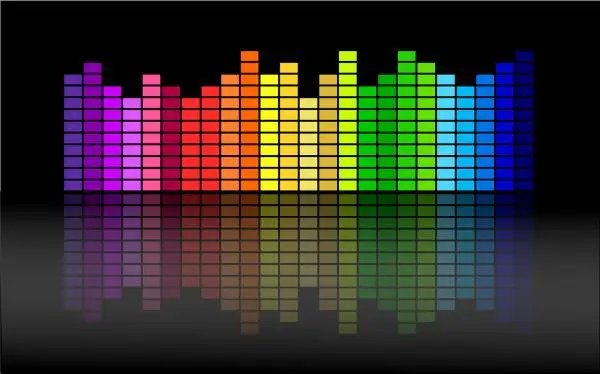When it comes to getting a great song master, one of the key terms to understand is dynamic range. While the term can refer to many things, we'll break down exactly what dynamic range is and how you can incorporate it properly in your sessions below. Let's jump into it!
What Is Dynamic Range in Audio?
In its purest form, dynamic range in music production is simply the decibel (dB) difference between quietest and loudest sounds in a mix or audio file. Therefore, songs with a wide dynamic range will have a larger gap between the loudest sound and quiet sound compared to songs with more consistent sound quality.
Dynamic range can also refer to the loudest and quietest sounds hardware or audio systems can properly represent. The bottom range of this value is called the noise floor. The noise floor is the amount of noise that a piece of gear naturally creates. Every piece of gear has some sort of noise level that should be accounted for during the mixing process.
You can't avoid a noise floor even with equipment as simple as an audio cable, but it's important to acknowledge so that you can create the cleanest mix possible.
For a musical instrument or hardwire system, the dynamic range is hence the distance between the noise floor and the loudest peak of sound. Sounds that fall above a piece of equipment's dynamic range become uncomfortably loud, which you might know as distortion.
In other words, dynamic range is the distance between the quietest and loudest. In music production, you'll find that audio engineers are constantly factoring dynamic range into their recording, mixing, and mastering decisions.
How Do You Change Dynamic Range?
Generally, dynamic range is altered through the process of compression. Compressors reduce the difference of the volume range in the loudest sound and quietest sound, thereby altering the overall dynamics and dynamic range of a track.
During the mastering process, engineers utilize compressors and ultra-powerful compressors called limiters to shape dynamic ranges. As a result of bringing up the softest passages in a piece of music, compression also has the effect of making processed signals louder.
It's worth noting that there are extremes in either direction: Dynamic ranges that are too wide can be delightfully dynamic but lack the loudness needed for a standard listening experience. On the other hand, a narrow dynamic range could be too overly compressed, making a song uncomfortably loud and devoid of the energy from the original dynamics.
How Much Dynamic Range Can We Hear?
It's worth noting that the range of human hearing is limited to a maximum dynamic range. Generally speaking, the maximum dynamic range for humans is about 120 dB between the softest signal we can detect, and when distortion starts to create physical pain.
Compression is very much needed in order to help satisfy our maximum range. For instance, the maximum dynamic range for analog audio is somewhere between 50 and 60 dB. However, digital audio is a whole different ball game.
The theoretical dynamic range of undithered 20-bit quantization of digital audio is 120 dB. Pushing past that limit is the theoretical dynamic range of 24-bit digital audio affording 144 dB of dynamic range, much of which human hearing can't detect since our threshold is at 120 dB.
Since there's so much variety between a given song's lowest and maximum level outputs, dynamic range will vary from one track to the next.
There's no magic key to finding your track's ideal dynamic range, but understanding the relationship between audio compression and how it affects your signal will help you find the sweet spot for any particular recording.

What's The Difference Between Dynamic Range and SNR?
SNR stands for signal to noise ratio, and it's often contrasted with dynamic range. While these terms are often used interchangeably, they aren't necessarily the same thing. A signal to noise ratio is essentially the distance between the average peaks in a signal and the noise floor.
Unlike the signal to noise ratio, dynamic range isn't necessarily dependent on a signal: A dynamic range's lowest limit is simply the softest sound that doesn't have a distorted output.
An optimized signal to noise ratio simply means that you have enough of a gear's signal flowing through to counteract the inevitable noise that comes from using a piece of equipment. On the most basic level, a good signal to noise ratio is when your live signal is above the noise floor.
Dynamic range can be used more broadly to distinguish the softest and loudest points measured in a mix.
Dynamic Range By Genre
Interestingly enough, the ideal dynamic range somewhat varies according to the genre. A study found that the dynamic range of popular genres like pop music, rap, or rock is typically smaller than samples in classical genres like opera and orchestra.
In some ways, this makes a lot of sense. Many listeners are seeking a smooth and boosted listening experience with optimal volume that flows from one song to the next.
Classical listeners, on the other end, may make a point to notice the difference in performance recordings. They crave nuance in signals, and will therefore be more likely to sacrifice decibels if it means they can hear the intricacies of any particular piece with a wider dynamic range.
The largest average dynamic range by far was actually found in speech recordings. With pop and rock and the loudest end of the spectrum, our raw speaking voices are on the other side of the coin.
One thing is for sure. The way we process source sounds and digital sounds is entirely different. We crave different types of dynamic ranges depending on what we're listening to.
Dynamic Range and Mastering
A lot of mastering boils down to using compression to find the perfect dynamic range for any particular track, but that can be easier said than done. A basic mastering session flows from equalization , to compression , to limiting , but each of these steps can be broken down into smaller subsets.
Mastering may be simple, but that doesn't mean that it's easy. This final step of music production requires you to put a final polish on a sound, and create a smooth listening experience without crushing the dynamics that give a track its innate character.
The pitfalls of neglecting a song's dynamic range are clear: Those who compress a signal so much that its dynamic range becomes virtually non-existent run the risk of sucking the life out of song or even creating unnecessary distortion.
On the other end of the spectrum, you can certainly have far too wide of a dynamic range with too little compression, leading to a performance that's hard to hear, too dynamic, and in some cases, unpolished.
The point is that finding an optimal dynamic range isn't a linear process. Rather it's going to vary greatly based on the sound you're trying to achieve and your system's capabilities.
Learning how to evaluate and produce an optimal dynamic range for any song can take years of training, focused listening experience. Thankfully, you can use services like Emastered to do the heavy lifting for you. Our algorithms are optimized to find the perfect dynamic range for your music so that you can dependably create polished, effortless mastered music .

The Loudness Wars and The Future of Music
Over the past 30 years, the amount of compression and limiting used on performance and studio songs alike has undoubtedly become louder. This has created a split among musicians, often referred to as "the loudness wars", and leading many to beg for their dynamic complexity back.
The idea is that the cultural reduction in dynamic range, and therefore amplified loudness, has caused us to lose nuances in a song's mix. Dynamic complexity is flattened as we continue to compress at a higher rate. It's also worth noting that most streaming services also employ their own form of normalization so that it isn't too loud moving from one track to the next.
A lot of the loudness split emerged out of the development of new genres like hip hop and Nu-metal in the 90's. As opposed to previous generations of music, these emerging genres prioritized more fluctuation in sound, with less of the same volume throughout. The result? The need for more compression.
As genres shifted, our taste did, too. The early 2000s were full of experimentation in sound, which also might've contributed to our increased use of compression. Regardless of your opinions on the loudness wars, it's clear that our musical tapes don't just shape what we listen to, they also directly inform how we choose to produce, mix, and master music.
The preferred dynamic range of today might not be the same sound of tomorrow. And that's precisely what makes music so exciting. Enjoy fine-tuning your track's dynamic range to bring out the best in your music.





